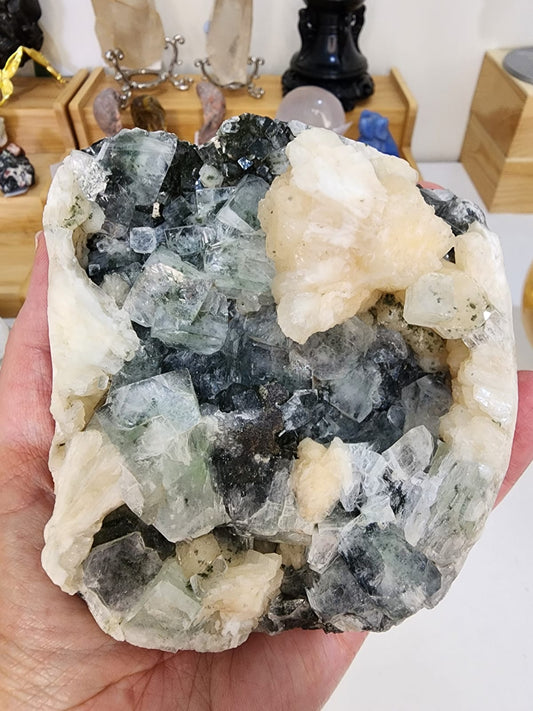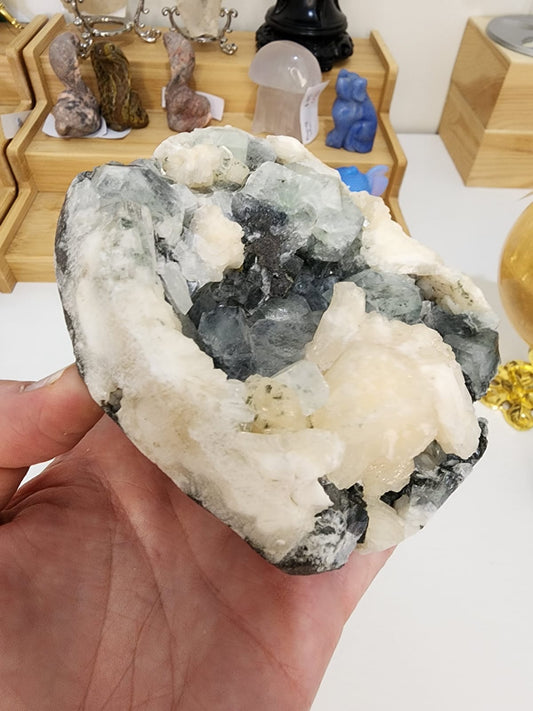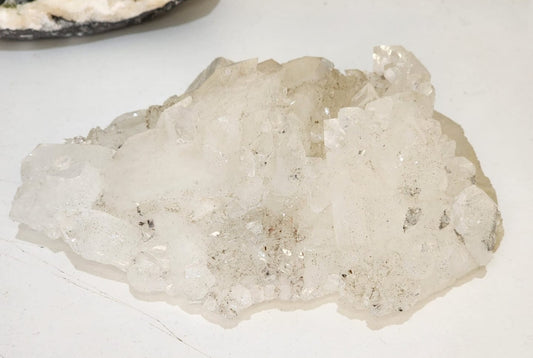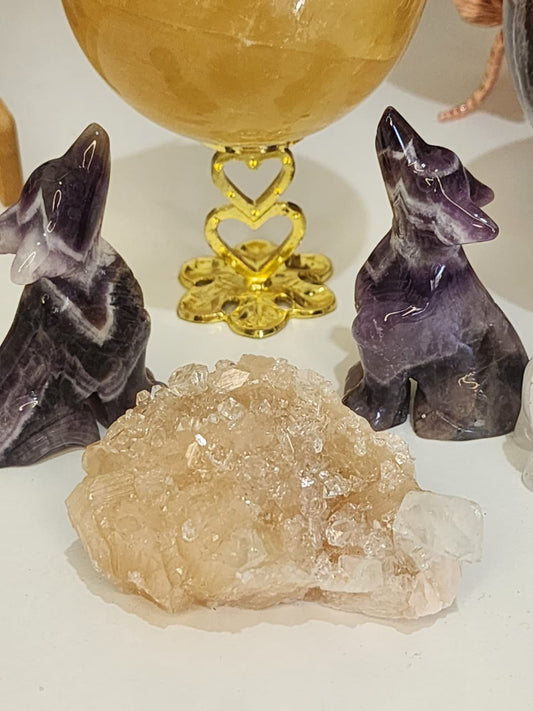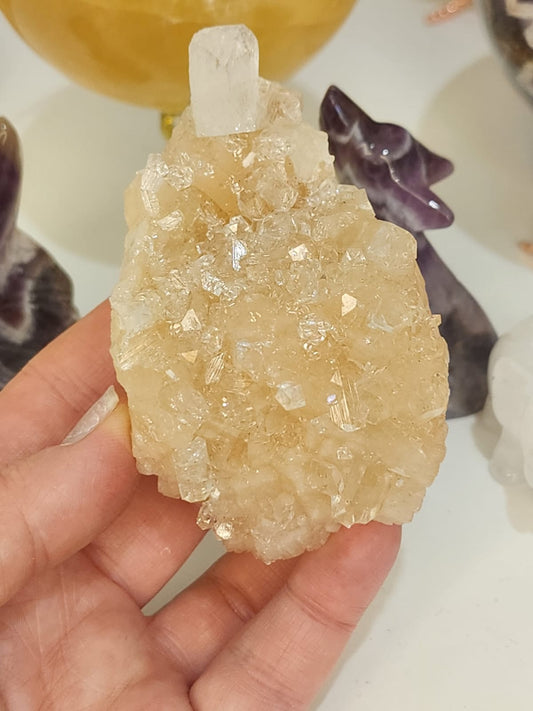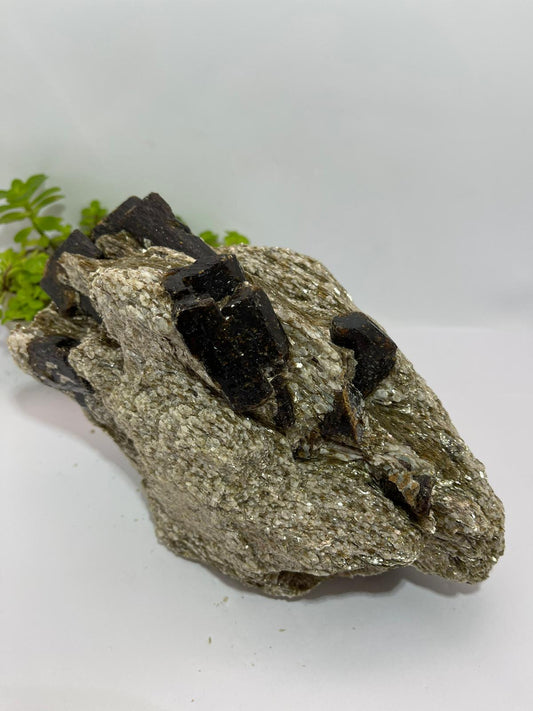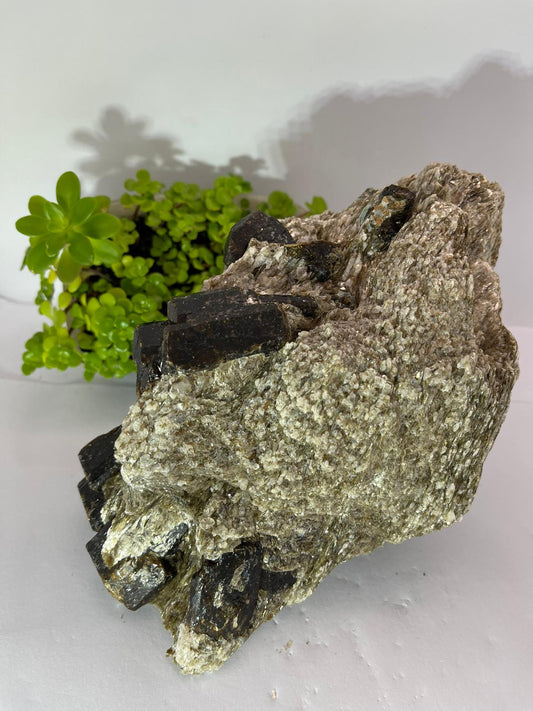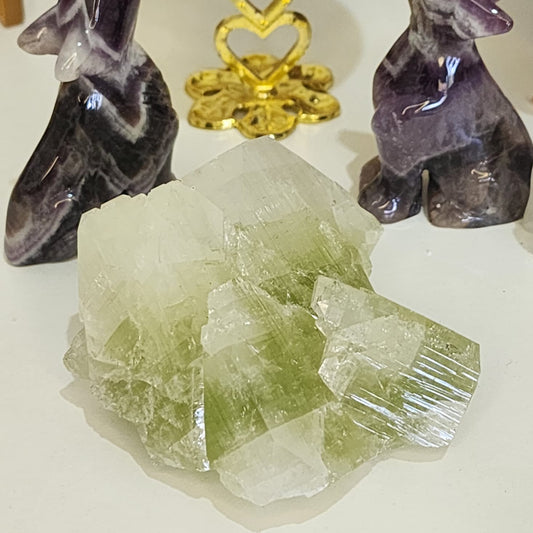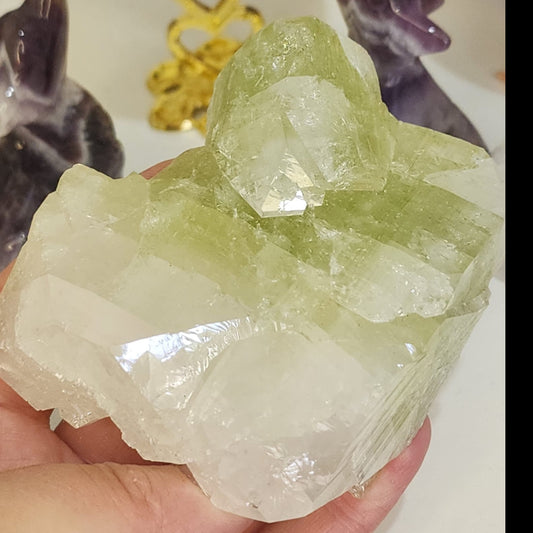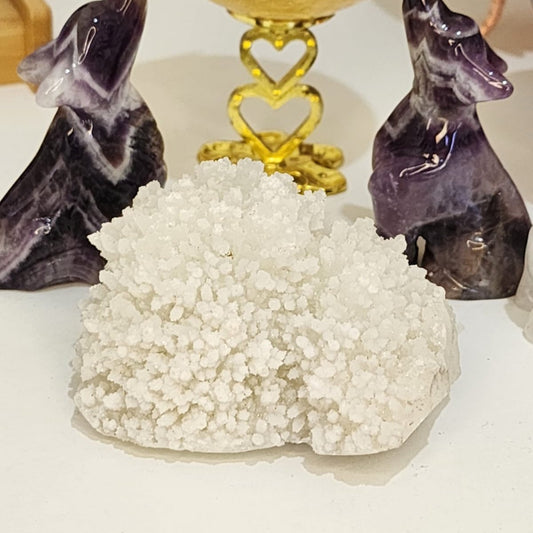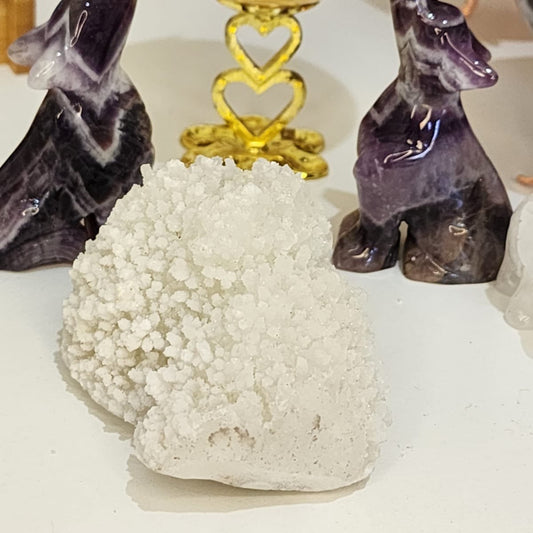Collection: Specimen Collection
Natural mineral specimens and crystals are found in the environment in their natural state and collected off the surface of the ground or are obtained through physical digging and mining. Natural crystals and specimens are not cut or polished.
Zeolite specimens are a collector’s dream—delicate, geometric, and often dazzlingly intricate. These minerals aren’t just pretty faces either; they’re natural molecular sieves with fascinating origins or uses 🌋✨
🧪 What Are Zeolites?
Zeolites are microporous aluminosilicate minerals formed when volcanic rocks interact with alkaline groundwater over thousands to millions of years. Their crystal structures contain open cavities that can trap water and ions, making them useful in everything from water purification to gas separation.
🌍 Where They’re Found
- India: Especially Maharashtra (Jalgaon, Pune), famous for stunning specimens like stilbite, heulandite, and cavansite.
- Tasmania, Australia: Known for chabazite, phillipsite, and rare finds like gonnardite and erionite in basalt cavities.
- Iceland, USA, and Italy: Other notable sources of natural zeolites.
💎 Popular Zeolite Specimens
|
Zeolite Type |
Appearance & Traits |
Often Found With |
|---|---|---|
|
Stilbite |
Peachy, fan-shaped crystals with pearly luster |
Apophyllite, Heulandite |
|
Heulandite |
Coffin-shaped, pink to greenish crystals |
Stilbite, Chalcedony |
|
Scolecite |
Needle-like sprays, often white or translucent |
Mesolite, Natrolite |
|
Chabazite |
Rhombohedral crystals, often orange or red |
Phillipsite, Calcite |
|
Cavansite |
Vivid blue rosettes (not a zeolite, but often found with them) |
Stilbite, Apophyllite |
Display tip: Zeolites are often fragile—especially needle-like forms like scolecite—so they’re best displayed in a cabinet away from direct handling.
🧘♂️ Metaphysical Vibes
Many collectors also value zeolites for their purifying and calming energy, often using them in meditation or energy healing practices.
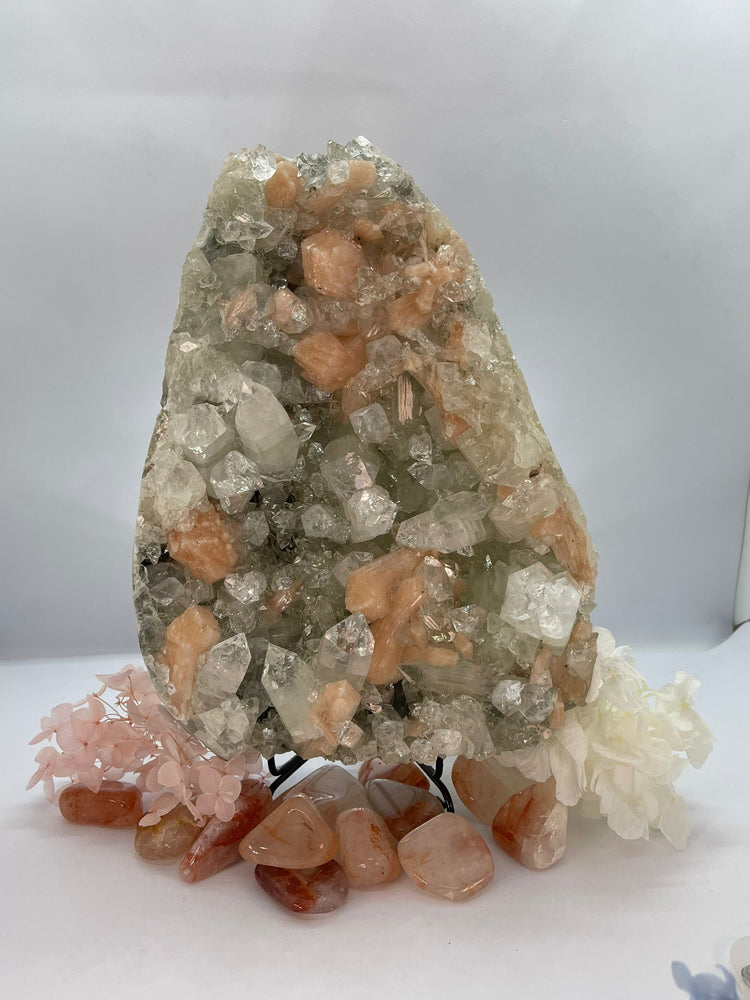
-
Specimen ~ Zeolite Mineral Apophyllite + Stilbite & Black Chalcedony
Vendor:I Love Crystal RaysRegular price $135.00 AUDRegular price -
Zeolite Mineral Apophyllite
Vendor:I Love Crystal RaysRegular price $132.00 AUDRegular price -
Specimen ~ Zeolite Mineral Apophyllite + Quartz
Vendor:I Love Crystal RaysRegular price $118.00 AUDRegular price -
Brown Dravite + Mica & Blue Apatite Inclusions 1937g
Vendor:I Love Crystal RaysRegular price $275.00 AUDRegular price -
Zeolite Mineral Apophyllite
Vendor:I Love Crystal RaysRegular price $130.00 AUDRegular price -
Zeolite Mineral Apophyllite + Quartz 122g
Vendor:I Love Crystal RaysRegular price $95.00 AUDRegular price

